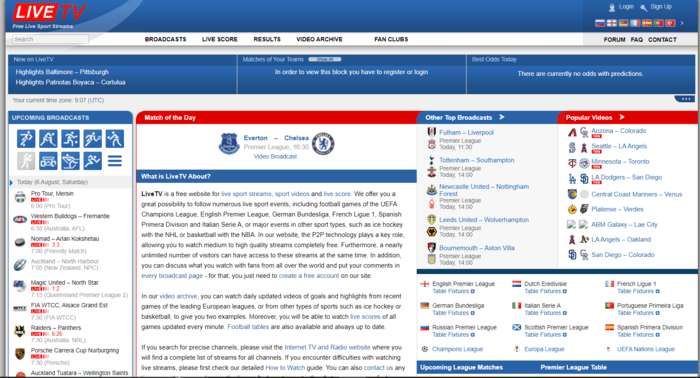This article is intended to help website design shops, traditional advertising agencies, and newer digital marketing agencies to stay up-to-date with the most recent SEO trends, to understand the impact of Google’s recent algorithm update, and provide specific instructions to implement these recommendations to improve your clients’ campaign results. Many SEO providers we speak to on a daily basis ask us for tips, tricks, and strategies that will save them time and provide superior results. After being asked for this information dozens of times, it finally dawned on us that we should write a post to encapsulate what we tell agency shop owners every day. This article will explain how to adapt to Google’s most recent algorithm updates and put you on a path to search engine domination. To do that, we need to understand the end goal of Google’s algorithm updates. But first, we need to understand searcher intent.
Understanding Searcher Intent Is Key
After each algorithm update, we are frequently barraged with phone calls asking us to explain the impact of the sudden change. Although each update is unique, they all help Google realize its ultimate goal, which is to provide high-quality search results so that users will continue to use their search engine for every search. For example, in 2019, there have been two core updates; the first core update was in March of 2019 and the second was in June. Both of those updates are further refinements of 2018’s “medic update.” The “medic” updated was given its name because it disproportionately affected sites in the medical space. In reality, this moniker was a bit of a misnomer as it affected all sites with low EAT scores (expertise, authority, and trust). Medical sites were disproportionately affected because many authors offering medical and health advice lack the expertise and authority to make those recommendations. As mentioned above, all of these updates are geared towards creating a better user experience for Google’s users.
It is critical to understand user intent when creating content for your website. The first step in understanding users is understanding how they get your website. The most common way for users to reach your website is still through keyboard searches. Users will typically type keywords to help them find products and services. It is important for you to understand which keywords users type in to find your clients. For example, if you have a med spa client in Los Angeles, typical search users would type it would be “med spa Los Angeles” or “Los Angeles med spa.” These kinds of searches are straightforward; they usually involve the city your searcher lives in and what kind of service they’re looking for. Searches for more complex products such as B2B software and other national clients typically involve more research on your part. We recommend using a cool web grader we found to aid you in your keyword research. All you need to do is find two or three competitors of that national client and enter them into the web graeder. The web grader will then display every keyword that your client ranks for. It’s a great tool and a great time saver. We highly recommend you use this web grader to save you time when conducting keyword research.
It is also important to optimize for voice search. The most important thing to understand about voice search is that the queries are usually more conversational in nature. In our med spa example above, if our searcher had been using voice search, they would say something more along the lines of “find a med spa near me” or “what med spas are open now?” To optimize for these phrases, we recommend you build an FAQ page, write blog posts that answer common questions, and work them into your service pages if appropriate. Now that we have an understanding of how to incorporate user intent into our content marketing, website marketing copy, and metadata, we will show you how to further improve results by making Google’s rank braid happy.
Understanding the Role of Artificial Intelligence
To better improve search results, Google introduced RankBrain in 2015. The goal of RankBrain is identical to Google’s constant algorithm updates, namely to provide users with great search results that help them find what they’re looking for and solve their problems. Although RankBrain’s goal is identical to Google’s algorithm updates, optimizing your website to take advantage of Google’s machine learning will require slightly different tactics. We recommend that you focus on four tactics that you can implement into your current marketing strategy for your clients today.
- Link building: Google considers links as votes for your website. Many SEO companies focus exclusively on on-site content and technical SEO changes and ignore link building because it is extremely difficult to find high-quality links for their clients. The number one challenge when link building for agencies is finding the time to search for quality links. Most agencies are inexperienced at link building and don’t have the relationships, which combined, makes finding links for clients extremely inefficient. Our recommendation is that agencies work with a white label SEO partner who specializes in providing backlinks to their agency partners.Your link building strategy is vital because low-quality links will not only reduce your domain authority, making you appear weaker in the eyes of search engines, but could actually lead to penalties from Google. Once Google penalizes your site, you’ll fall in the search engine rankings, making it more difficult for users to find your website. You can avoid these problems by using link building services with a clear track record in the industry. Avoid potential penalties by asking your chosen SEO firm about the strategies it uses and how it sources its backlinks.
- Images Optimization: It’s human nature to focus our attention on pictures. an appealing image that connects along with your topic in an article means can inspire users to share your content, and will certainly leave an impression. Always use unique and compress image, take the time to source out images that illustrate the subject of your article and compress with the image-compressor tool https://smallseotools.com/image-compressor/
- Content quality: We will go into more detail about how to generate quality content below. Suffice to say is important to create content that addresses the needs of your ideal customer.
- Keyword research: You can still use the keyword research methodology we identified above; however, we do recommend you focus on medium-tail keywords. Medium-tail keywords are typically three- to four-word phrases. These longer keyword phrases tend to result in a higher conversion rate as they are more specific than shorter keyword phrases. We highly recommend you add these medium-tail keywords to your content.
- Click-through rates: Before we discuss how to increase your click-through rate, let’s define what click-through rates measure: the percentage of searchers who click on your search result per number of impressions. When users type in a keyword and are presented with 10 options in Google search results, they typically select one of those search results and click on it. Users will typically click on the search result that they believe will help them solve their problems. The best way to improve your click-through rate without improving your rankings in Google is to improve your description tag. The description tag is typically found in the descriptive text below the hyperlink in your search result. Check out our screenshot below to see an example of a description tag. Follow these four steps to creating a dynamite description tag:
- Keep your description tag at or below 155 characters
- Be sure your description tag contains some of your keywords
- Include a clear call to action
- Offer a concise description of your client’s service offerings and or product selection
Create Long-Form Content
Many agency owners we talked to write blog posts that are below 500 words in length. If you are still doing this, we ask you to consider making your typical blog post four to five times that length. Overwhelming research shows that it takes 2,000 to 2,500 words of content to appear on page one of Google’s search results.
Google really likes extensive content for a number of reasons. The most obvious is that it allows you to cover a topic in a very thorough fashion. When writing a long-form blog post, take the opportunity to go into detail. Readers love step-by-step instructions that explain very closely how to solve problems they’re facing. Your clients will love this content as they will be viewed as a thought leader in their space, it will increase the time on page for each of their blog posts, and it will help them speak to their ideal customer in a very authentic way. Because these blog posts are truly helpful and useful, long-form blog posts have the added benefit of turning readers into customers.
Thank you for taking the time to improve your SEO skills; your clients will greatly appreciate the effort you made today to improve their campaigns. Go forth and use this knowledge to help you get new page one ranking for a client’s site, which will lead to longer retention for you and your team. We wish you the best, and if you have any comment please leave them below.








Add Comment